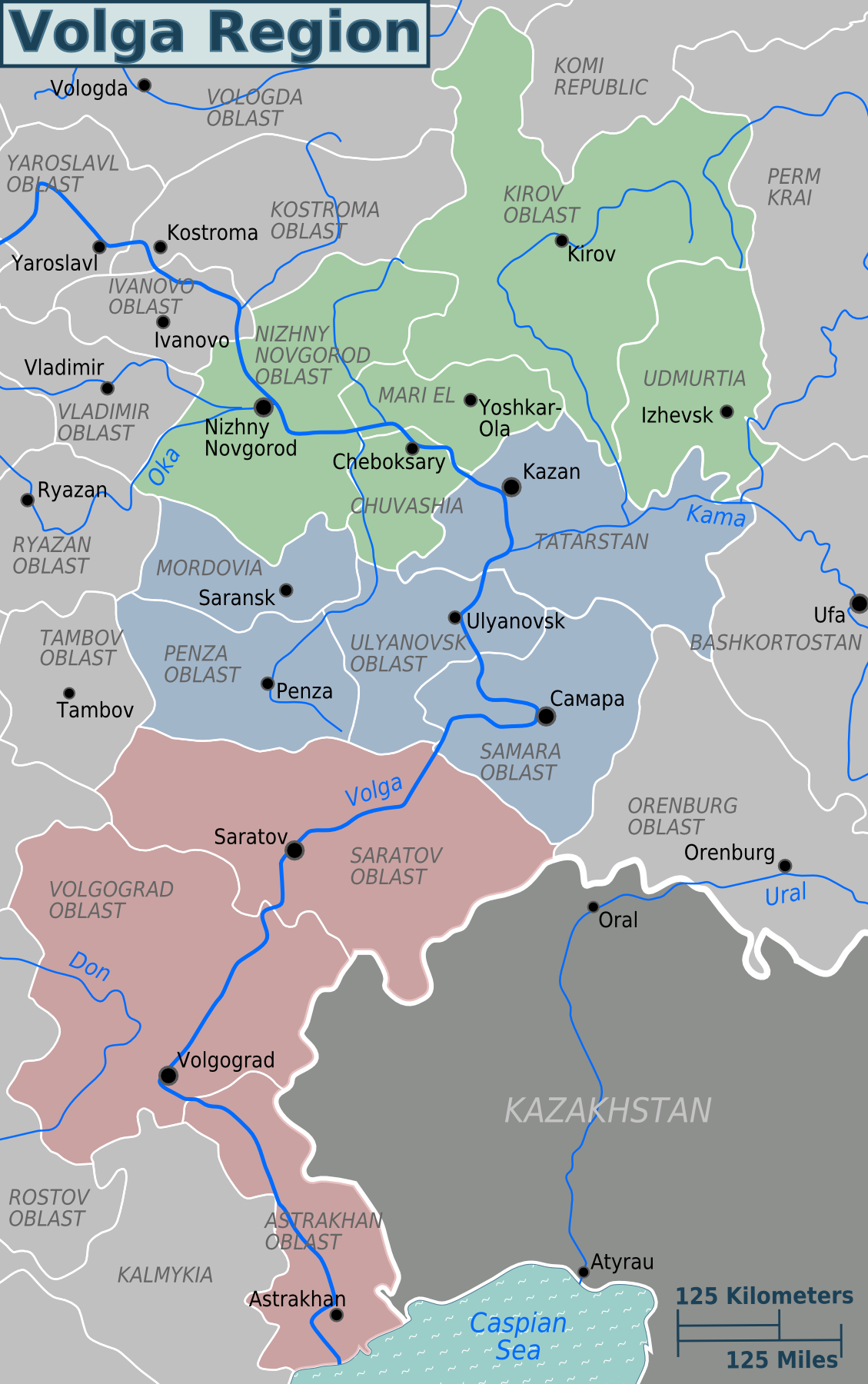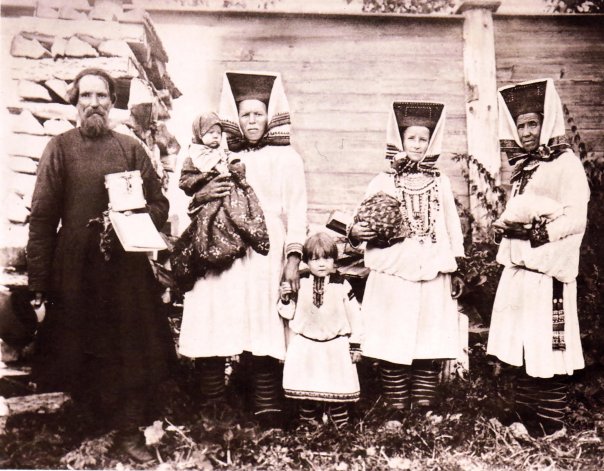|
Garmoshka
The garmon ( rus, гармо́нь, p=gɐˈrmonʲ, links=yes, from rus, гармо́ника, p=gɐˈrmonʲɪkə, r=garmonika, cognate of English ''harmonica''), commonly called garmoshka, is a kind of Russian button accordion, a free-reed wind instrument. A garmon has two rows of buttons on the right side, which play the notes of a diatonic scale, and at least two rows of buttons on the left side, which play the primary chords in the key of the instrument as well as its relative harmonic minor key. Many instruments have additional right-hand buttons with useful accidental notes, additional left-hand chords for playing in related keys, and a row of free-bass buttons, to facilitate playing of bass melodies. The garmons can be of two major classes: unisonoric, meaning that each button plays the same note or chord when the bellows is being expanded as it does when compressed; and bisonoric, in which the note depends on the direction of the bellowswork. Examples of uniso ... [...More Info...] [...Related Items...] OR: [Wikipedia] [Google] [Baidu] |
Livenka (music)
The livenka () or Livenskaya garmoshka () is a specific variety of accordion used in Russian folk music, specifically in the region around the town of Livny (Oryol Oblast), from which the instrument takes its name. Description *The livenka is a unisonoric instrument, meaning that each button produces the same tone, regardless of the direction of the bellows. *The right-hand buttons (of which there may be 12 to 15) play the notes of the '' obikhodnyy'' pitch set, which may also be thought of as a series of overlapping Mixolydian modes. (Banin, A.A. 1997. p.161) *The left-hand levers play intervals of thirds or fourths, so that adjacent levers operated simultaneously will play a triad. *The livenka has a very long bellows, when compared to other accordions—sometimes having forty folds, and extending to over a meter in length. History The name of the inventor of the livenka was not preserved. It is believed to have been developed in the second half of the 19th century as a modif ... [...More Info...] [...Related Items...] OR: [Wikipedia] [Google] [Baidu] |
Khromka
Khromka (, ''khromka'') is a type of Russian garmon ( unisonoric diatonic button accordion). It is the most widespread variant in Russia and in the former USSR. Nearly all Russian garmons made since the mid of the 20th century are khromkas. History Since 1830s when first Russian diatonic accordions (named ''garmonika, garmon'' or ''garmoshka'' after ) began being produced in Tula many regional variations appeared. One of them were one-row accordions from Vyatka (called ''severyanka'' from ''sever'' "North") and from Livny (called ''livenka''). Their important feature was that it was unisonoric (the same note is produced on pressing and drawing the bellows), while all other European types including Russian ones were bisonoric (two notes are produced on pressing and drawing the bellows). From those types under the probable influence of two-row bisonoric German accordions the first khromkas were made in 1890s. At first they were one of many types and were competing with other ... [...More Info...] [...Related Items...] OR: [Wikipedia] [Google] [Baidu] |
Circle Of Fifths
In music theory, the circle of fifths (sometimes also cycle of fifths) is a way of organizing pitches as a sequence of perfect fifths. Starting on a C, and using the standard system of tuning for Western music (12-tone equal temperament), the sequence is: C, G, D, A, E, B, F/G, C/D, G/A, D/E, A/B, F, and C. This order places the most closely related key signatures adjacent to one another. Twelve-tone equal temperament tuning divides each octave into twelve equivalent semitones, and the circle of fifths leads to a C seven octaves above the starting point. If the fifths are tuned with an exact frequency ratio of 3:2 (the system of tuning known as just intonation), this is not the case (the circle does not "close"). Definition The circle of fifths organizes pitches in a sequence of perfect fifths, generally shown as a circle with the pitches (and their corresponding keys) in clockwise order. It can be viewed in a counterclockwise direction as a circle of fourths. Harmonic progres ... [...More Info...] [...Related Items...] OR: [Wikipedia] [Google] [Baidu] |
Slovenian Music
In the minds of many foreigners, Slovenian folk music means a form of polka that is still popular today, especially among expatriates and their descendants. However, there are many styles of Slovenian folk music beyond polka and waltz. , , , and are a few of the traditional music styles and dances. Prehistory The Divje Babe flute, a perforated bone found in a cave at the Divje Babe site Cerkno, Slovenia. It is controversially believed to be a flute, which makes it possibly the oldest known musical instrument ever. Its age is estimated at approximately 55,000 years. The history of modern Slovenian music can be traced back to the 5th century, when Christianity spread in Carantania. Liturgical hymns (''kyrie Eleison'') were introduced, and became the first plainchant to make a connection to the peoples' language. Classical music Medieval During the medieval era, secular music was as popular as church music, including wandering minnesingers. George Slatkonia, a Carniolan ... [...More Info...] [...Related Items...] OR: [Wikipedia] [Google] [Baidu] |
Ural (region)
Ural () is a geographical region located around the Ural Mountains, between the East European Plain, East European and West Siberian Plain, West Siberian plains. It is considered a part of the Eurasian Steppe, extending approximately from the North to the South; from the Arctic Ocean to the end of the Ural (river), Ural River near Orsk city. The border between Europe and Asia runs along the Eastern side of the Ural Mountains. Ural mostly lies within Russia but also includes a small part of Northwestern Kazakhstan. This is historical, not an official entity, with borders overlapping its Western Volga and Eastern Siberia neighboring regions. At some point in the past, parts of the currently existing Ural region were considered a gateway to Siberia, or even Siberia itself, and were combined with the Volga administrative the divisions. Today, there are two official namesake entities: the Ural Federal District and the Ural economic region. While the latter follows the historical border ... [...More Info...] [...Related Items...] OR: [Wikipedia] [Google] [Baidu] |
Volga Region
The Volga region, known as the ( , ; rus, Поволжье, r=Povolžje, p=pɐˈvoɫʐje; ), is a historical region in Russia that encompasses the drainage basin of the Volga River, the longest river in Europe, in central and southern European Russia. The Volga region is culturally separated into three sections: * Upper Volga Region – from the Volga River's source in Tver Oblast to the mouth of the Oka River in Nizhny Novgorod; * Middle Volga Region – from the mouth of the Oka River to the mouth of the Kama River south of Kazan; * Lower Volga Region – from the mouth of the Kama River to the Volga Delta in the Caspian Sea, in Astrakhan Oblast. The geographic boundaries of the region are vague, and the term ''Volga region'' is used to refer primarily to the Middle and Lower sections, which are included in the Volga Federal District and Volga economic region. Geography The Volga Region is almost entirely within the East European Plain, with a notable distinction contr ... [...More Info...] [...Related Items...] OR: [Wikipedia] [Google] [Baidu] |
Mari People
The Mari ( ), also formerly known as the Cheremis or Cheremisses, are a Finno-Ugric peoples, Finno-Ugric people in Eastern Europe, who have traditionally lived along the Volga and Kama River, Kama rivers in Russia. They live mostly in the Mari El republic, with significant minorities in Bashkortostan, Perm Krai, Tatarstan and Udmurtia. Name The ethnic name ''mari'' derives from the Proto-Indo-Iranian root *''márya''-, meaning 'human', literally 'mortal', which indicates early contacts between Finno-Ugric languages, Finno-Ugric and Indo-Iranian languages. Subgroups There are two main ethnographic subgroups of Mari people: Meadow Mari people, Meadow Mari, who live on the right bank of the Volga river, and Hill Mari people, Hill (or Mountain) Mari, who live on the left bank. The ethnogenesis of these two subgroups, and formation of distinct dialects, probably took place in the 14th century. Meadow Mari comprise the majority of Mari, and Meadow Mari language, their language va ... [...More Info...] [...Related Items...] OR: [Wikipedia] [Google] [Baidu] |
Cherkess
The Circassians or Circassian people, also called Cherkess or Adyghe ( Adyghe and ), are a Northwest Caucasian ethnic group and nation who originated in Circassia, a region and former country in the North Caucasus. As a consequence of the Circassian genocide, which was perpetrated by the Russian Empire during the Russo-Circassian War in the 19th century, most of the Circassian people were exiled from their ancestral homeland and consequently began living in what was then the Ottoman Empire—that is, modern-day Turkey and the rest of the Middle East. In the early 1990s, the Unrepresented Nations and Peoples Organization estimated that there are as many as 3.7 million Circassians in diaspora in over 50 countries. The two Circassian languages—western Adyghe and eastern Kabardian—are natively spoken by the Circassian people. After the Russian Empire's war crimes and forced deportation, Ubykh branch of Circassian fell out of use and went extinct in Turkey with the death ... [...More Info...] [...Related Items...] OR: [Wikipedia] [Google] [Baidu] |
Ossetian Music
Ossetia is a region located on both sides of the Greater Caucasus Mountains. The folk music of Ossetia () began to be collected and recorded in the late 19th and early 20th century. After the Revolution of 1917, professional music appeared in Ossetia and in the following decades, a number of symphonies, ballets, operas and other institutions were formed. There is an Ossetian State Philharmonic. The first Ossetian opera was ''Kosta'', by Christopher Pliev. Folk music Ossetian folk music began to be collected in the late 19th and early 20th century. Boris Galaev made substantial contribution to the collection and documentation. Ossetian folk songs were divided into categories: * Historic songs * Revolution songs * Heroic songs * Worker's songs * Wedding songs * Drinking songs * Humorous songs * Dance songs * Love songs * Lyrical songs Traditional Ossetian musical instruments include: *''Kisyn fandyr'' (хъисын фæндыр or хъисын фандыр), a vertical ... [...More Info...] [...Related Items...] OR: [Wikipedia] [Google] [Baidu] |





